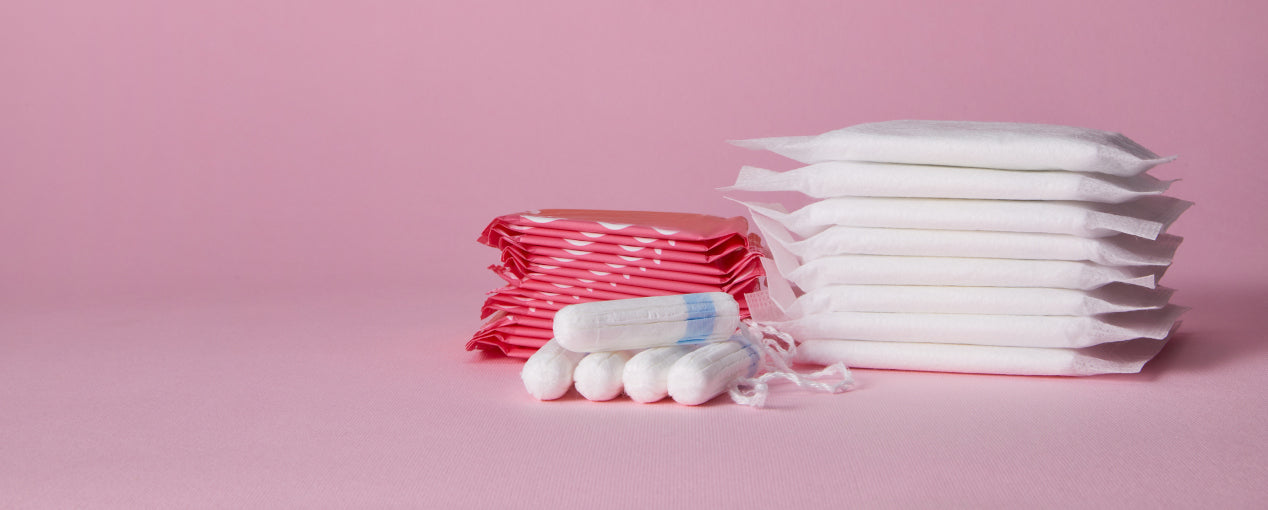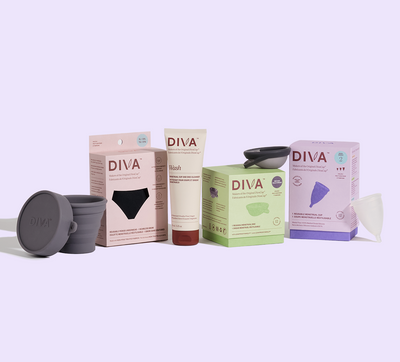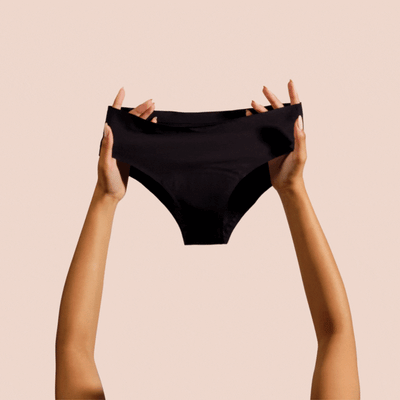
In this article /

Yes, it’s true – the aisle in which you look for period products is called the ‘feminine hygiene’ section. We’re not 100% down with this term. Just because it’s been used for years, doesn’t mean we need to keep using it. As we continue to smash the taboos surrounding periods and reproductive health, we are seeing a shift in language and how people talk about periods.
The DivaCup has taken a stance to no longer use the term “feminine hygiene”. Partially because of the word hygiene, which implies there’s something dirty or shameful about menstruation. And also because of the word feminine; not all those who menstruate identify with a word that implies “female” or “woman”.
So, let’s get to it. “Feminine hygiene”, you’re under investigation – brace yourself.
History of the Term Feminine Hygiene
Have you ever wondered where the term feminine hygiene came from? The history of the term is anything but empowering.
The Comstock Act
Let’s go back to the late 1800s, when New Yorker Anthony Comstock set off for Washington with an anti-obscenity bill. On March 3, 1873, Congress passed his new law, later known as the Comstock Act. The Comstock Act banned all “obscene” materials. This made it illegal to sell or advertise products that were labeled contraceptives, or anything that referred directly to sex.
Creating the Term Feminine Hygiene
What does the Comstack Act have to do with the term feminine hygiene? Everything! For the birth control industry to continue, they needed to disguise their products with creative wording. They coined the term “feminine hygiene” and used it to advertise their repackaged, over-the-counter products.
The term itself was put into circulation around 1924 by the marketers of Zonite and Lysol. Both products were popular household disinfectants that were also advertised as contraceptive douches. By using the term feminine hygiene, they were able to create a legal loophole. Now, companies could legally sell their products in the U.S. in the 1920s and 30s in all department stores, drugstores and catalogs.
The Influence of Germ Theory
Let’s not forget the influence germ theory had on the term feminine hygiene, and personal hygiene in general. Before the mid-nineteenth century, people seldom bathed for personal cleanliness. It wasn’t until germ theory was introduced (the idea that microbes cause illness) that people started seeking ways to clean themselves regularly in order to prevent disease and infection.
Towards the end of the 19th century, companies who sold personal hygiene products used the idea of hygiene to their advantage. But, because there was so much competition, they had to get creative in how they marketed their products. Often, they drew from social and health fears, all while assuring their brand was the answer to common hygiene “problems”. Of course, these personal hygiene products weren’t always the safest. Many of them contained chemicals that are harmful to humans. For example, the popular floor cleaner Lysol, which was marketed as a vaginal douching agent. Although many are no longer used for personal hygiene, the stigma their marketing tactics created continued today in popular menstrual discourse.
Feminine Hygiene in Advertising in the 20th Century
Advertisers use of the term feminine hygiene over the last 100 years has perpetuated a negative stereotype of menstruation for everyone. Themes of shame around the leaky body, concealment and hygiene, as well as the false promise of freedom support an unrealistic portrayal of the menstruating body.
Consumers in the mid 1950s were targeted using various menstrual discourses that preyed on their insecurities, fostering feelings of shame, embarrassment and unworthiness, around their monthly period. Popular ideas that circulated included telling women their husbands would leave them, their friends would outcast them, and their lives would fall apart if they didn’t treat the ailment that is menstruation using these feminine hygiene cleaning products. Although we now know the vagina is self-cleaning and douches are unsafe, back then it was socially unacceptable to use these products regularly.
Even advertisements for menstrual pads were sold as sanitary products for feminine hygiene, and often referred to menstruation as women’s “oldest hygienic problem.” Another main selling point was discreetness when purchasing and disposing of pads to avoid embarrassment. So much so that period products were often stocked behind the pharmacist counter. Silent purchase coupons were used so that no words needed to be exchanged.
The Term Feminine Hygiene Today
A lot of companies, like ours (Diva International), have chosen to ditch this outdated term. We replace it with words like “menstrual product”, “period product”, “period care” – you get the idea.
Although the menstrual care industry has made huge strides with how menstrual products are advertised, the term feminine hygiene is still a topic of debate.
Some may call this topic irrelevant because “they’re just words”. The reality is that words carry powerful messages, passed down through generations. A century of using feminine hygiene in reference to menstrual care just further discourages self-acceptance and supports negative thinking around the topic of menstruation. This is the exact opposite of what our community of DivaCup users is all about.
So, let’s all ditch the term feminine hygiene already. The Inner Revolution is moving towards a future of positive period talk! Let’s not only care for our bodies, but for our language too.






















